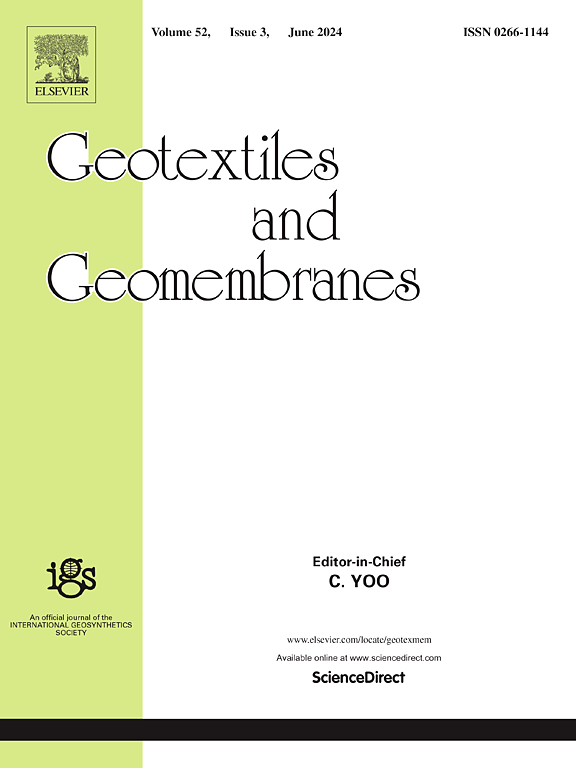New theoretical solution for soft soil consolidation under vacuum pressure via horizontal drainage enhanced geotextile sheets
IF 6.2
1区 工程技术
Q1 ENGINEERING, GEOLOGICAL
引用次数: 0
Abstract
Land reclamation is a major construction activity in Singapore and other Asian countries. When granular fills become scarce, soft materials have to be used for land reclamation. A new land reclamation and soil improvement method using vacuum preloading and horizontal drainage enhanced non-woven geotextile (HDeG) sheets for soft soil consolidation has been proposed to reduce consolidation time and save costs. This paper presents a new theoretical solution for analysing the consolidation process of soil under vacuum pressure via horizontal drainage enhanced geotextile sheets as such a solution is not available yet. To verify the proposed theoretical solution, model tests and finite element analyses (FEA) have also been conducted. The proposed analytical solution agrees well with the results from FEA and the model tests in settlement, average effective stress and degree of consolidation. Thus, this solution could be used for design and analysis for land reclamation with soft materials consolidated using vacuum preloading together with HDeG sheets or other horizontal drainage materials with an adequately high transmissivity. The prediction of the consolidation performance relies on the proper selection of the coefficient of consolidation based on the effective stress history of soil.
通过水平排水增强土工织物片材实现真空压力下软土固结的新理论解决方案
在新加坡和其他亚洲国家,填海造地是一项主要的建筑活动。当粒状填料变得稀缺时,就必须使用软质材料进行土地开垦。有人提出了一种新的土地开垦和土壤改良方法,利用真空预加载和水平排水增强型无纺土工织物(HDeG)片材进行软土固结,以缩短固结时间并节约成本。本文提出了一种新的理论解决方案,用于分析真空压力下通过水平排水增强土工织物片材进行土壤固结的过程,因为目前还没有这种解决方案。为了验证所提出的理论解决方案,还进行了模型试验和有限元分析(FEA)。在沉降、平均有效应力和固结程度方面,所提出的分析解决方案与有限元分析和模型试验的结果非常吻合。因此,该方案可用于设计和分析使用真空预加载技术加固的软质材料以及高密度聚乙烯板材或其他具有足够高渗透率的水平排水材料的土地开垦。固结性能的预测依赖于根据土壤的有效应力历史正确选择固结系数。
本文章由计算机程序翻译,如有差异,请以英文原文为准。
求助全文
约1分钟内获得全文
求助全文
来源期刊

Geotextiles and Geomembranes
地学-地球科学综合
CiteScore
9.50
自引率
21.20%
发文量
111
审稿时长
59 days
期刊介绍:
The range of products and their applications has expanded rapidly over the last decade with geotextiles and geomembranes being specified world wide. This rapid growth is paralleled by a virtual explosion of technology. Current reference books and even manufacturers' sponsored publications tend to date very quickly and the need for a vehicle to bring together and discuss the growing body of technology now available has become evident.
Geotextiles and Geomembranes fills this need and provides a forum for the dissemination of information amongst research workers, designers, users and manufacturers. By providing a growing fund of information the journal increases general awareness, prompts further research and assists in the establishment of international codes and regulations.
 求助内容:
求助内容: 应助结果提醒方式:
应助结果提醒方式:


